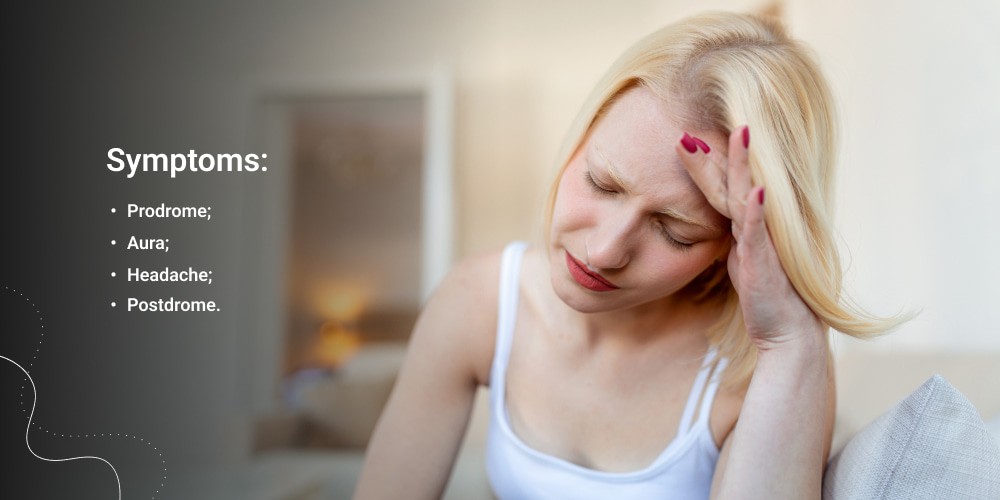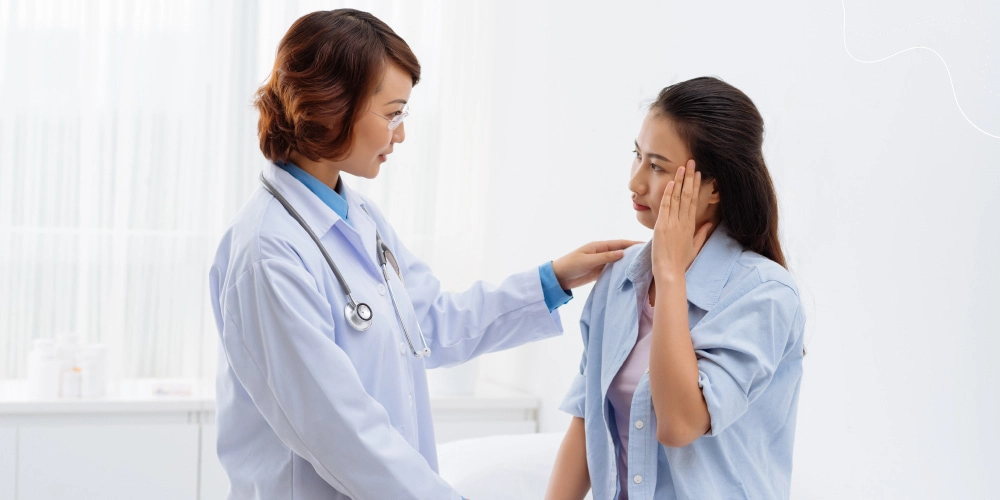Welcome to our comprehensive guide about triggers for migraines. Have you ever wondered about the mysterious factors that lead to those pounding headaches? If so, you’re in the right place. Various elements in our daily lives can become the triggers. Comprehending these stimuli is the first step towards managing and preventing them. In this user-friendly exploration, we’ll unravel the common migraine triggers. We want to shed light on the often-overlooked culprits behind these throbbing episodes. Those might be certain foods, environmental factors, or lifestyle choices. We’ve got you covered with practical insights. They’ll help you navigate the sometimes perplexing world of migraines. Get ready to empower yourself with knowledge and take charge of your well-being. Learn how to identify and avoid these problems. Let’s kickstart this journey to a headache-free life together!
Understanding What Triggers Migraines
A migraine is a neurological disorder. It is characterized by recurring episodes of severe headaches. They are often accompanied by other symptoms such as nausea, vomiting, sensitivity to light, and sound. These episodes are more than just intense headaches. They involve a complex interplay of neurological and vascular changes in the brain. Their primary feature is a throbbing or pulsating pain. It is usually on one side of the head. However, some individuals may experience pain on both sides. These aches can last anywhere from a few hours to several days.
Understanding what triggers migraines is paramount for those aiming to manage and prevent these painful episodes. Migraine triggers can vary from person to person. So, pinpointing specific factors that initiate an attack is often a personal journey.
Another point we want to mention is that this disorder can involve “aura“. An aura refers to perceptual disturbances or neurological symptoms. They can precede or accompany the headache phase. Auras may include visual disturbances. Those are seeing flashing lights, zigzag lines, or experiencing temporary vision loss. Other sensory disruptions, such as tingling sensations or difficulty speaking, can also occur.
The exact cause of this state is not fully understood. Yet, they are believed to involve a combination of genetic, environmental, and neurological factors. Triggers such as stress, certain nourishment, and hormonal changes can precipitate attacks. Below, we will discuss what triggers migraine.
List of Migraine Triggers
Are you still wondering how to manage migraines efficiently? It requires a keen understanding of the diverse factors that can act as catalysts. In this guide, we’ll be delving into a comprehensive list of migraine triggers. This carefully compiled checklist can be really helpful for many. It allows us to easily define and handle particular aspects that might cause these episodes. That way we can proactively work to reduce the frequency and intensity of attacks. Let’s delve into this informative collection.
Genetic Factor
Migraines, like many other medical conditions, can have a genetic component. The role of genetics is complex and involves a combination of inherited factors. They may influence an individual’s susceptibility to various triggers for migraines.
- Family History. A significant indicator of a genetic predisposition is often found in family histories. Individuals with close relatives, who suffer from this condition are more likely to experience it themselves.
- Genetic Markers. Scientific research has identified specific genetic markers. These markers are variations in genes that may affect the way certain processes in the brain and nervous system function. These variations can contribute to an increased sensitivity to migraine triggers
- Inheritance Patterns. They do not follow a straightforward inheritance pattern. Instead, multiple genes are interacting. Each one contributes a small effect. The inheritance of this disorder is likely polygenic.
- Neurotransmitter Regulation. Genetic factors can influence the regulation of neurotransmitters. Those are chemicals that transmit signals in the brain. They may contribute to the susceptibility to migraines.
Stress and Anxiety
High stress levels and anxiety are significant triggers for migraines. This underscores the importance of adopting effective stress management techniques. They can alleviate the impact on both the commonness and intensity of these debilitating headaches.
When confronted with chronic stress or acute anxiety, the body responds with physiological changes. It turns into a cascade of events that may lead to the initiation of a migraine episode. The release of stress hormones, muscle tension, and changes in blood flow are among the physiological responses. To lower their impact it’s important to modify your daily routines. Practices such as meditation, mindfulness, and yoga proved to be extremely helpful. They foster long-term resilience against the cumulative effects of chronic stress.
Sleep Patterns
Irregularities in sleep duration and quality can become headache triggers as well. When sleep patterns deviate from the body’s natural rhythm, many physiological changes occur. They are affecting neurotransmitter regulation, hormone levels, and overall brain function. Such disruptions can lower the migraine threshold in susceptible individuals. Plus, insufficient rest can heighten stress levels. Also, it amplifies pain perception and triggers hormonal imbalances. On the other hand, excessive sleep, while seemingly restorative, can also disrupt the delicate balance.
To mitigate this impact, maintaining a consistent sleep schedule becomes a key strategy. Establish a regular bedtime and wake-up time, even on weekends. It helps synchronize the body’s internal clock. Additionally, ensure an adequate amount of rest each night.
Dietary Factors
Another point on our list of migraine triggers is food. Did you know that particular foods and beverages might be causing these awful headaches? Among the commonly identified culprits are aged cheese, chocolate, caffeine, and alcohol. Cheese and chocolate contain tyramine—a compound associated with migraines. Caffeine might offer temporary relief for some. Yet, it can also act as a double-edged sword.
Maintaining awareness of dietary triggers requires a proactive approach. One effective method is the diligent use of a food diary. Try keeping a record of daily food and beverage intake, along with any subsequent migraine occurrences. This record can include details such as meal times, types of foods, and quantities. Also, consider contacting a healthcare professional or dietitian. They can provide valuable insights into developing a balanced and migraine-friendly diet.
Can Stress Cause Migraines?
Numerous studies suggest a complex interplay between stress and migraines. So, can stress actually cause migraines? It actually causes many physiological responses in the body. It includes the release of certain chemicals and hormones that can affect the nervous system. This, in turn, may contribute to the development of migraines.
The human body’s response to stress involves the activation of the “fight or flight” mode. This happens through the release of adrenaline and other stress-related chemicals. This heightened state of arousal can lead to alterations in the brain’s electrical activity.
Furthermore, stress is often associated with poor sleep and irregular eating habits. These lifestyle changes can further contribute to the likelihood of experiencing migraines. On a psychological level, stress can also be a contributing factor. Emotional stress has been identified as a potential trigger for migraines. The connection between mental health and migraines is an evolving area of research.
Identifying Your Personal Migraine Triggers
Identifying personal migraine triggers is a vital step toward controlling awful aches. Catalysts can vary widely from person to person, making it necessary to start self-discovery.
One effective way to identify triggers is to maintain a migraine diary. Record details about each episode. Include the date, time, duration, and intensity of the headache. Additionally, document any probable stimuli. Also, control your eating habits to identify specific items that might push your condition. Pay attention to your sleep routine. Define whether your rest is qualitative and consistent. Environmental factors such as strong odors, bright lights, and loud noises can be triggers for headaches. Analyze whether they are affecting you.
For many women, hormonal changes can contribute to this state. So, try tracking your menstrual cycle and hormonal fluctuations. Consult with a specialist to explore hormonal management options if necessary.
Conclusion
The journey to identify and avoid migraine triggers is a personalized exploration. It holds the key to effective headache management. Delving into the intricacies of what triggers migraines is not only a means of understanding one’s unique susceptibilities. It’s also a pathway toward regaining control over one’s well-being. As individuals navigate the labyrinth of potential triggers, the power of self-awareness emerges as a potent tool in the arsenals. From dietary choices to sleep patterns, and stress levels to environmental factors, it all can be influential.
The importance of maintaining a vigilant eye on the nuances of daily life cannot be overstated. Patterns and associations begin to surface through dedicated tracking and reflection. The pursuit of optimal well-being extends beyond the mere avoidance of stimuli. It encompasses a holistic approach to health. This encompasses factors such as stress management, balanced nutrition, and sleep hygiene. In this ongoing quest, contacting experts can provide valuable guidance. It guarantees a comprehensive and tailored strategy.
FAQ
What are the most common triggers for migraines?
Common triggers for migraines include stress, certain foods (such as chocolate, cheese, and caffeine), hormonal changes, lack of sleep, environmental factors (like strong odors and bright lights), and specific medications.
How can I determine what triggers my migraines?
Determining migraine triggers involves keeping a detailed migraine diary, tracking factors such as food and drink intake, sleep patterns, stress levels, and environmental influences.
Can dietary changes help in managing migraine triggers?
Yes, dietary changes can be effective in managing migraine triggers. Eliminating or moderating the consumption of known trigger foods may help reduce the frequency and intensity of migraines in some individuals.
Are migraines always triggered by external factors?
No, migraines are not always triggered by external factors. Some individuals may also experience migraines due to internal factors such as hormonal fluctuations, genetics, or neurotransmitter imbalances. Understanding both external and internal triggers is crucial for comprehensive migraine management.













Please, leave your review
Write a comment: